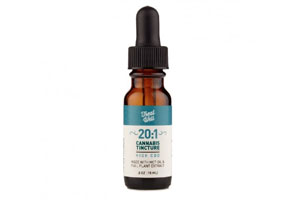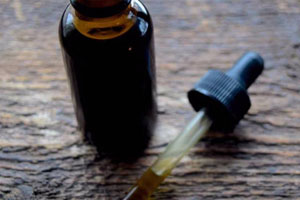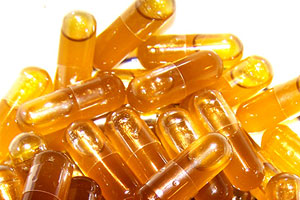Log In To Your Account
Log In With Facebook
A tincture is any medicine where a drug is dissolved in alcohol. Cannabis is the active ingredient in tinctures since the beginnings of civilization. The ancient Chinese, Romans and Egyptians all used cannabis tinctures to relieve aches, diminish pain, heal wounds and improve disposition. Tinctures are an important part of cannabis based healing today. You can see tinctures marketed as products like Rick Simpson Oil (RSO). The concentration of THC is a variable that skilled makers can adjust for to make a consistent product.

Alcohol has the distinct ability to denature aromatic compounds. This means that any smell produced by marijuana will likely be lost during the imbuing process. So don't expect to keep all of the complex aromas or flavors that may be present in the marijuana before extraction.
It is important to remember that some elements or compounds commonly used on the skin can be harmful if ingested. Ether and propylene glycol based tinctures are not designed for internal consumption. Even though they are used in topical ointments and crèmes, they are dangerous to ingest.
Traditional tinctures use alcohol as a solvent for trichomes. The right solvent comes in the form of grain alcohol like 151 or glycerin. These are chemically stable, stable under low heat and can easily absorb THC. Alcohol is the more common element while glycerin is growing in popularity as a tincture base.
Using Isopropyl alcohol is very dangerous as chemicals are added in order to prevent people from drinking it. The chemicals added turn ethanol into methanol which is deadly. Methanol prevents the body from processing alcohol and will kill you if not treated by administering large amounts of ethanol. Alcohols stored in labs and schools are also imbued with the methyl compound so play it safe and stick with grain alcohol.
Tinctures can be made with flower, leaves, stems and pretty much the whole plant. Each element adds a slightly different flavor but most people can't tell the difference. Concentrates like BHO and PHO can also be added to alcohol to create wonderfully potent tinctures. Using concentrates to make tincture is a very expensive way to go.

We will assume you have either flower or a combination of flower and leaves. The cannabis is normally ground up to increase surface area and thoroughly mixed in with the solvent. The plant matter can be pulverized in a food processor, with a mortar/pestle or with a herb grinder. The smaller the pieces, the more efficiently the active cannabinoids like THC and CBD transfer to the solvent.
Take the ground up plant matter and mix it with the alcohol. The mixture is then heated over a low heat like a crock pot for several hours. It is stirred regularly to ensure all of the active ingredients dissolve. The color of the mixture will darken as the cannabinoids are dissolved into the alcohol or glycerin.
Heat evaporates alcohol making the end product have less volume. Overheating can also damage glycerin but won't reduce volume in the same way as alcohol. Prevent volume loss by placing the unheated mixture back in the bottle. Proceed to mix it every couple of hours over the course of several days. Store the bottle in a cool dark place to keep UV rays from damaging the brew.
Once the liquid is fully saturated (marked by a change in color towards green) strain the mixture. You can replace it in the bottle or divide it into smaller units. Once bottled, the tincture is ready to use. Small droppers are a common way to dose out the highly concentrated liquid. A few drops under the tongue is plenty for most individuals or concentrations.
Inside the cheek and under the tongue are a massive number of capillaries, or tiny blood vessels. This means that the tincture can be absorbed directly into the bloodstream without the need to go through the digestive system. As you go further and further down the digestive tract, there are less and less exposed capillaries to absorb the THC.

Alternative methods of consumption include dissolving tincture in tea or coffee, mixing it with dressings or other foods and putting the fluid into gel caps. While all methods have the same end result, some may be more appropriate for a given situation than others. If large doses of concentrated THC is required like for those treating certain cancers, it is important to find as many ways as work for you.
A good method for many people unsure of what dose to take is to test with a single mL of tincture and wait. It can take up to an hour for tincture to take effect as it has to be absorbed into the bloodstream. If one mL isn't enough, try increasing the dose the next time. Always give it enough time (several hours) before trying to dose again.
Holding the tincture under the tongue is a common method of consumption. Many people find it to be the fastest way to feel the tincture. People looking for a slower release may prefer gel caps as the capsule itself takes time to digest before the tincture is released.
Tinctures are also a low calorie alternatives to edibles. Compared to the average cannabis-infused brownie, tinctures are way healthier. If the tincture was made with 190-proof alcohol, it has about 7 calories per mL. Any tincture worth its weight will easily keep the dose under a normal brownie’s 112 calories.
Variation does exist in both potency and personal resistance to cannabinoids. Once ingested, there is little a person can do to 'come down' from THC. Doses of CBD often help reduce the potency of a high but can be hard to obtain. It is important to know your limits before operating machinery or performing important tasks.
Tinctures are a great way for people to consume cannabis without smoking. Patients needing high levels of THC find tinctures to be a wonderful addition to their routine as it diversifies the intake method and wont stress the lungs. The delayed activation time can also provide additional relief throughout the day for patients looking to medicate regularly.